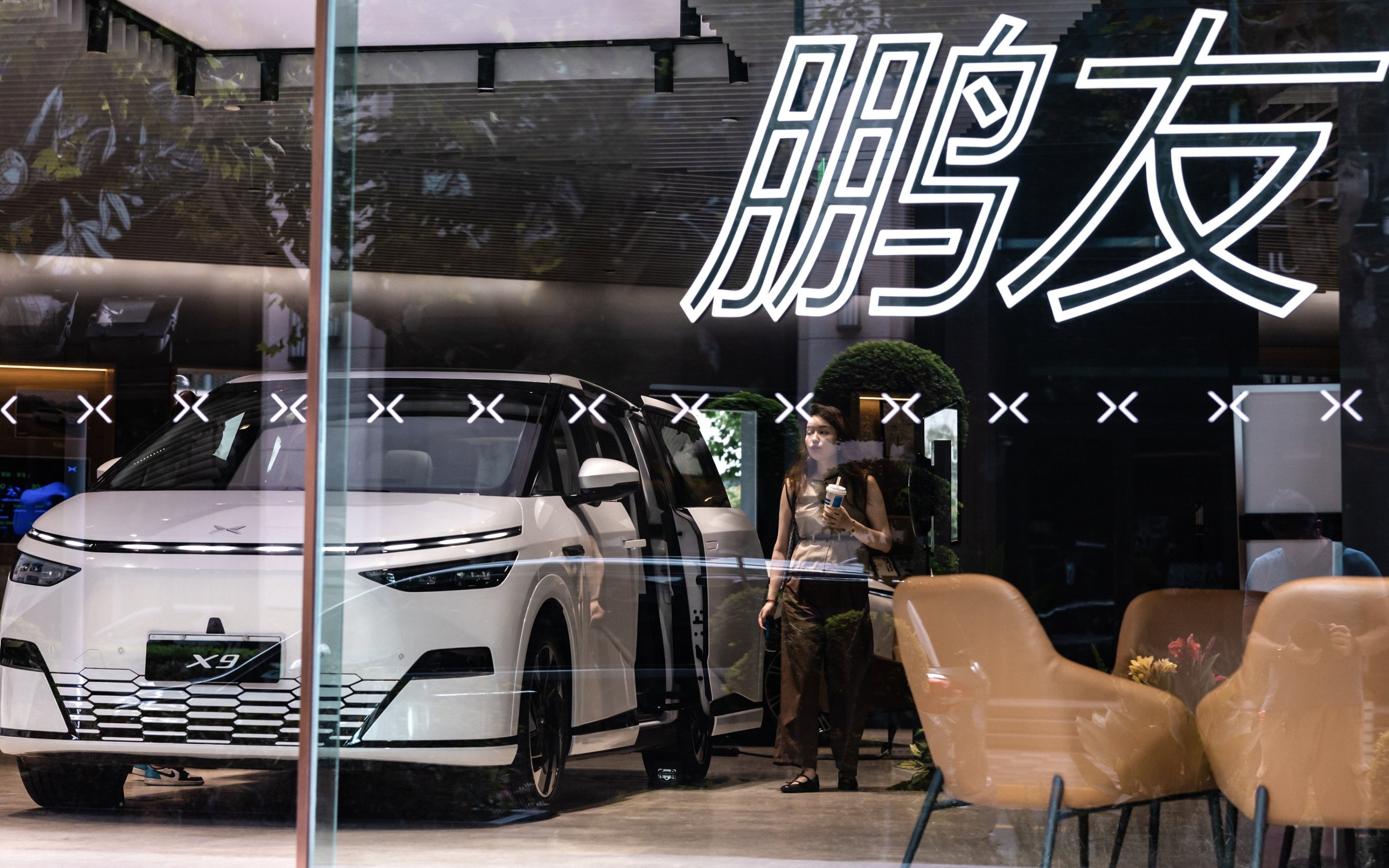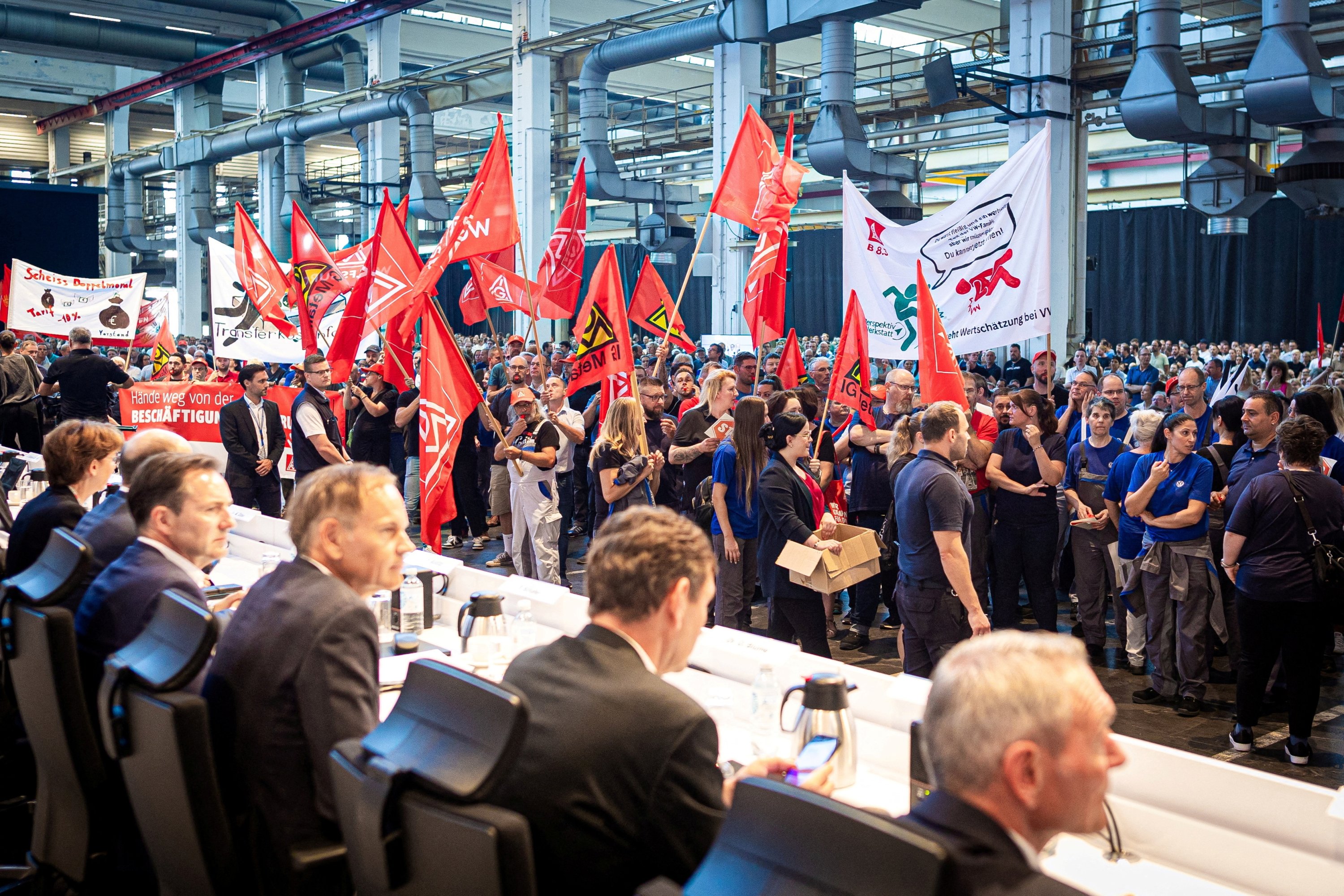© Turkuvaz Haberleşme ve Yayıncılık 2026
Europe boasts a diverse automotive landscape and is home to some of the most esteemed manufacturers shaping the industry.
The two largest economies of the eurozone, Germany and France, together host brands that are recognized for their supreme quality, reliability ratings and even luxury.
From BMW, Volkswagen (VW) and Mercedes-Benz to Renault, Citroen and Peugeot these brands have their unique style and offerings, yet some of them appear to be at a crossroads, particularly due to profitability and rising competition.
For instance, some models of VW Tiguan, a solid market performer and often a choice of larger families, are comparably more expensive than the Skoda Karoq or Ford Kuga.
This competition challenges brands such as VW to maintain strong delivery despite the Karoq being, for instance, relatively smaller than the Tiguan or the Kuga less refined, although quite spacious and trendy.
Meanwhile, the shifting environment of the industry has also led to some other European brands gaining ground. For example, a complementary brand of the Renault Group, Dacia has been a strong performer in recent years, presenting a different case but revealing that cars that fall between the category of once-classic and luxury appear to be at risk.
Then comes the much-discussed topic of the splash created by Chinese electric automakers, their growing numbers and robust sales.
While VW has announced changes to its China strategy by the end of the decade, aiming to get a larger share of the local market, developed economies like the U.S., Canada and the EU bloc have all recently imposed levies on Chinese-made EVs, fearing that overcrowding of their markets could endanger domestic production.
The German giant VW ceded its title of best-selling car brand in China to Chinese EV giant BYD in late 2022, and the group's market share in China fell to 14.5% last year from 19.3% in 2020 as combustion-engine sales declined.
“The sharpened strategy in China has three pillars: a comprehensive product portfolio accelerating the electrification of the brand’s models, a brand and design language developed specifically for the Chinese market, and local technical development with strong partners in China to accelerate the pace of innovation,” Volkswagen said earlier this year.
Fierce competition, fast proliferation of BYD and rapid expansion of Elon Musk’s Tesla added to the woes of VW and in general other brands that might have not been prepared for the pace at which China embraced EVs.
However, some analysts argue that the EU could have pursued a different approach, as tariffs do not directly translate into greater effectiveness for local automakers. Rather than escalating trade disputes, they suggest that the EU should have focused on enhancing the competitiveness of its automotive industry and rethinking critical strategies.

Adding to the complexity, Chinese EV manufacturers, including the world’s largest by sales, BYD, are expanding rapidly beyond their domestic market. BYD has entered Thailand, is in talks to open a plant in Mexico, and has already committed to investment in Türkiye.
In contrast, VW, which has a quite limited EV lineup, has been plagued by crises, including the potential closure of plants in Germany. While German production contributes significantly to the country’s economy and supports thousands of jobs, factory closures would inevitably lead to job losses, which would mark an unprecedented case for a company of its size.
Even the head of VW's workers' union Daniela Cavallo pointed out after talks with the board this week that high production costs in Germany are “not a new issue,” citing wages and benefits as key factors and placing responsibility on the company’s management to find solutions amid crisis.

"New cheaper competition, higher energy prices and high labor costs all align for a very difficult outlook especially for European mass brands," Citi analysts said this week. Yet, the margins of Renault and Stellantis quoted better in the first half of the year when compared to VW.
Most recently the ex-chief of VW Group, Martin Winterkorn also found himself on trial over the "dieselgate scandal," coinciding with days the German auto giant was actually going through another mass crisis, just a decade later.
“European OEMs (original equipment manufacturers) have long benefited from enormous brand popularity, some of it the result of decades-long sponsorships with iconic international sporting events," a comprehensive report published by Boston Consulting Group (BCG) last fall said.
"Premium European brands are seen as status symbols in the U.S., and Western car brands are also popular in China. Indeed, VW, BMW, Mercedes-Benz and Audi together command one-fifth of unit sales in the Chinese auto market,” it added.
However, it cited that “a change of sentiment began with the diesel emissions scandal in 2015” and along with technology advancements “European carmakers risk being viewed as old world and corporate, not as hip, dynamic, young, modern or sustainability-oriented like the new EV OEMs.”
In addition to the EVs produced in China that are not dubbed just as cheap but rather of high quality, the report also mentioned the trend of direct sales that some brands such as Lucid and Rivian in the U.S. and Vinfast in Vietnam have adopted. This, according to BCG, translated into building manufacturer-to-consumer relations, which are different from dealerships.
However, other questions also revolve around the general pace of adoption of EVs around the globe and the European electric car market actually has been stagnating in the past year.
“In July, battery-electric cars accounted for 12.1% of the EU car market, down from 13.5% the previous year,” leading industry association ACEA said in a report in August.
This is compared to the strong performance of hybrids, which increased their market share, growing from 25.5% to 32%, according to ACEA.
Most recently Sweden's iconic car brand Volvo also abandoned its 2030 all-electric vision and left doors open for hybrid vehicles as well.
Like this, it appears that EU automakers face a tough balancing act in adopting the right strategy in line with market needs while also not losing much on profitability.
Comparing prices, we can see that the new Volkswagen ID.4 Pro costs around 46,000 euros ($51,000) in Germany, the Citroen e-C4 comes in at about 35,000 euros, while some China-made models such as the BYD Atto 3 cost less than 38,000 euros and the MG MG4 Electric 51 kWh is of similar price as the e-C4.
Business models in particular of German automakers were long seen as success stories and many date back to the era of rapid expansion that came after World War II.
However, amid shifting political tides, the rise of protectionism and the enlargement of dozens of new brands, these car brands face the challenge of staying equally popular as before. Much of the newer generation costumers also often turn to explore even when it comes to buying a new car or simply opt for those better-looking or more affordable rather than legacy brands.
"There is little doubt anymore that the European auto industry is at a crossroads," BCG said.
"Competition and costs, slow uptake of new technologies, the challenge to take a clear leadership role in EVs and uncertain globalized supply chains have combined to make the potential futures of European OEMs and suppliers change and unusually difficult."
Coming out of this as a winner or simply having a modest lead requires thinking long-term, having a correlated approach to the issue by policymakers and major companies and simply trying to adapt quickly to changing trends. Work in the direction of battery innovation, adopting technologies like AI and creating value for customers is needed.
